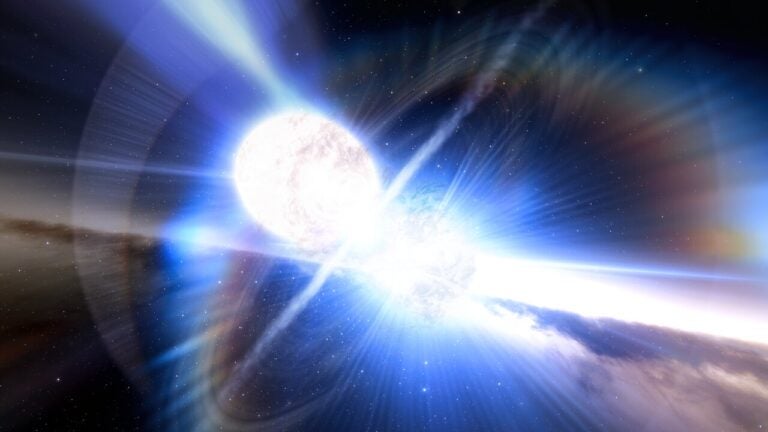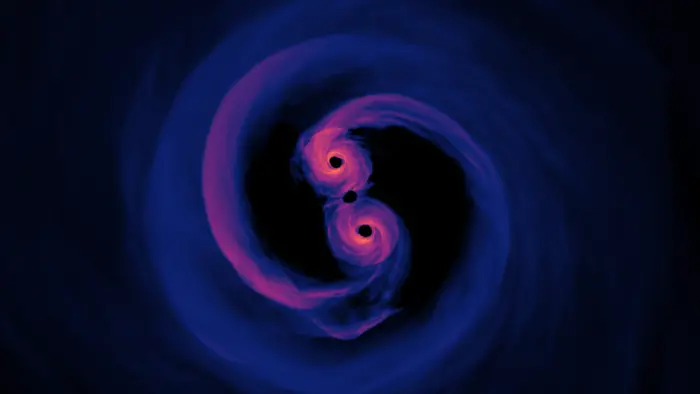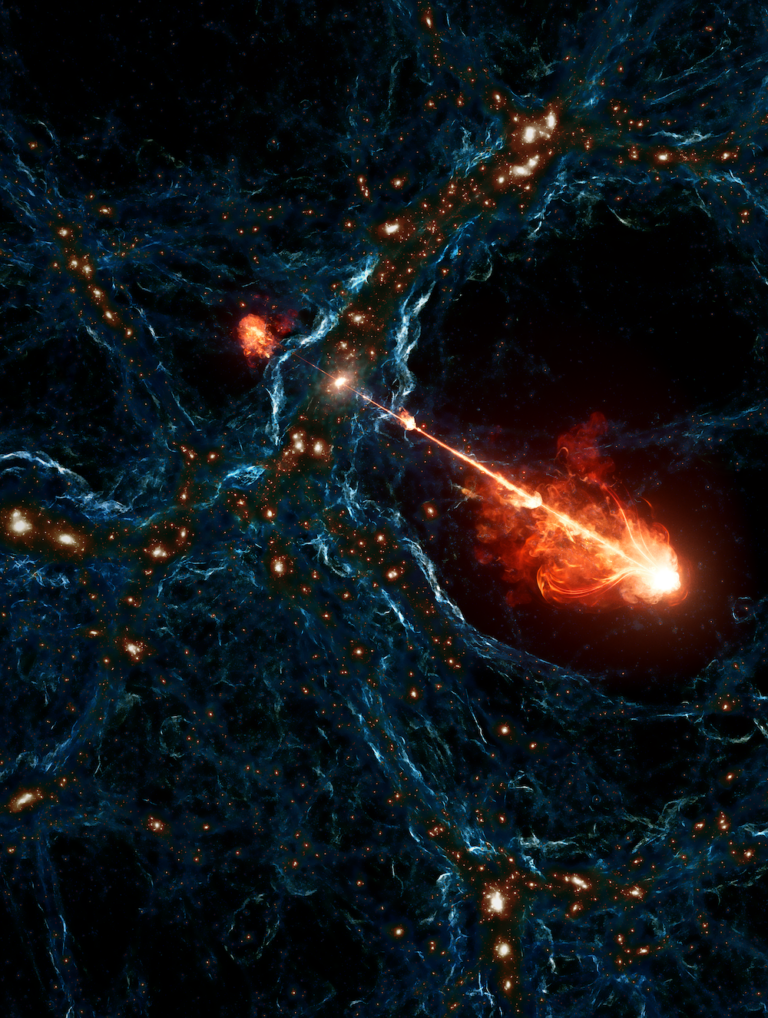
Astronomers have discovered a lightweight black hole that’s a bit of a cosmic conundrum. Hypothetically, black hole masses can range all the way from far less than a paperclip to at least tens of billions of times more than the Sun. But observations have revealed a strange scarcity of black holes between about two and five times the Sun’s mass. Right now, it’s unclear whether these mini black holes are just hard to detect or actually as rare as they seem to be.
The newfound black hole could offer clues. It falls right in the middle of the gap, weighing in at about 3.6 solar masses. A team of scientists found it thanks to a bloated companion, a red giant star located about 5,800 light-years from Earth. Though the star is only about 2.7 times as massive as the Sun, it’s around 13 times larger and 100 times brighter.
Uncovering a black hole
Using data from the European Space Agency’s Gaia spacecraft, which tracks the positions of more than a billion stars in our galaxy over time, astronomers noticed the red giant whirling around an invisible partner. Because Gaia mainly tracks proper motion — 2D motion, or left, right, up, and down — scientists followed up with ground-based telescopes to measure the star’s motion toward and away from us.
That information revealed something unexpected: two objects, together called G3425, with a very wide, circular orbit around each other.
Here’s why that’s perplexing. When the black hole formed, it would have rapidly lost mass during a supernova explosion. That weight loss should disrupt the binary’s gravity.
“There’s a really basic orbital mechanics idea that if a binary system loses half its mass it becomes unbound,” writes Phil Plait, an astronomer who was not involved in the study, in a newsletter. “In other words, the two objects fly apart.” While in this case the black hole’s weight loss wouldn’t have been quite extreme enough to de-anchor it altogether, it would have resulted in a very elongated orbit — not the near-circular one astronomers saw.
That also assumes that the supernova happened uniformly. However, observations have shown that these explosions can be a bit lopsided, sending the leftover object careening through space. That would certainly explain why so few low-mass black holes are found — they could be knocked loose from their companion stars, left to roam the cosmic abyss alone and unseen. And it makes the unlikely cosmic duo G3425 a lot more interesting.
Song Wang, an astronomer from the National Astronomical Observatories of the Chinese Academy of Sciences who co-led the study, suggests another possible explanation. G3425 might have started out as a triple-star system with two massive stars in the center and the red giant orbiting the pair. “The present black hole [may have] formed as a result of a merger of the inner binary,” he says. “It is also possible that the central unseen object still contains two less massive compact objects.”
Curiouser and curiouser
The researchers were hunting down binary systems in which one member was a lightweight black hole to test the idea that such systems may not even be possible. But now that they’ve demonstrated a way to identify low-mass black hole systems, future observations could offer clues to how common these objects are and how they might form.
Scientists plucked G3425 out from Gaia observations of nearly 1.5 billion sources, but there are more than 100 billion stars in our galaxy. Wang says that hints that hundreds more such systems could be out there just waiting to be found. Identifying and studying more of them, along with improving theories and simulations, may explain how these pairs evolved.
In his newsletter, Plait points out that this isn’t the first time scientists have spotted binary systems that shouldn’t exist. A separate Gaia study targeted binary systems containing stars like our Sun, alongside dense stellar corpses called neutron stars, which can also form following the collapse of a massive star.
Neutron stars are so faint that they’re extremely hard to detect when they’re on their own. But by watching Sun-like stars wobble, researchers were able to identify nearly two dozen of the dead stars invisibly tugging at their bright partners.
Again, it’s unclear how these binaries exist.
“In principle, the progenitor to the neutron star should have become huge and interacted with the solar-type star during its late-stage evolution,” said the leader of that study, Kareem El-Badry, an assistant professor of astronomy at Caltech and an adjunct scientist at the Max Planck Institute for Astronomy in Germany, in a press release. When that progenitor went supernova, it should have blasted the two stars off in different directions.
“Clearly, there’s a piece we’re missing here, and my gut feeling is that it’s the same piece in both stories,” Plait says. “Some factor in the way stars evolve in a binary is doing something unexpected, and it’s doing similar things for black holes and neutron stars in wide orbits around Sun-like stars.”









